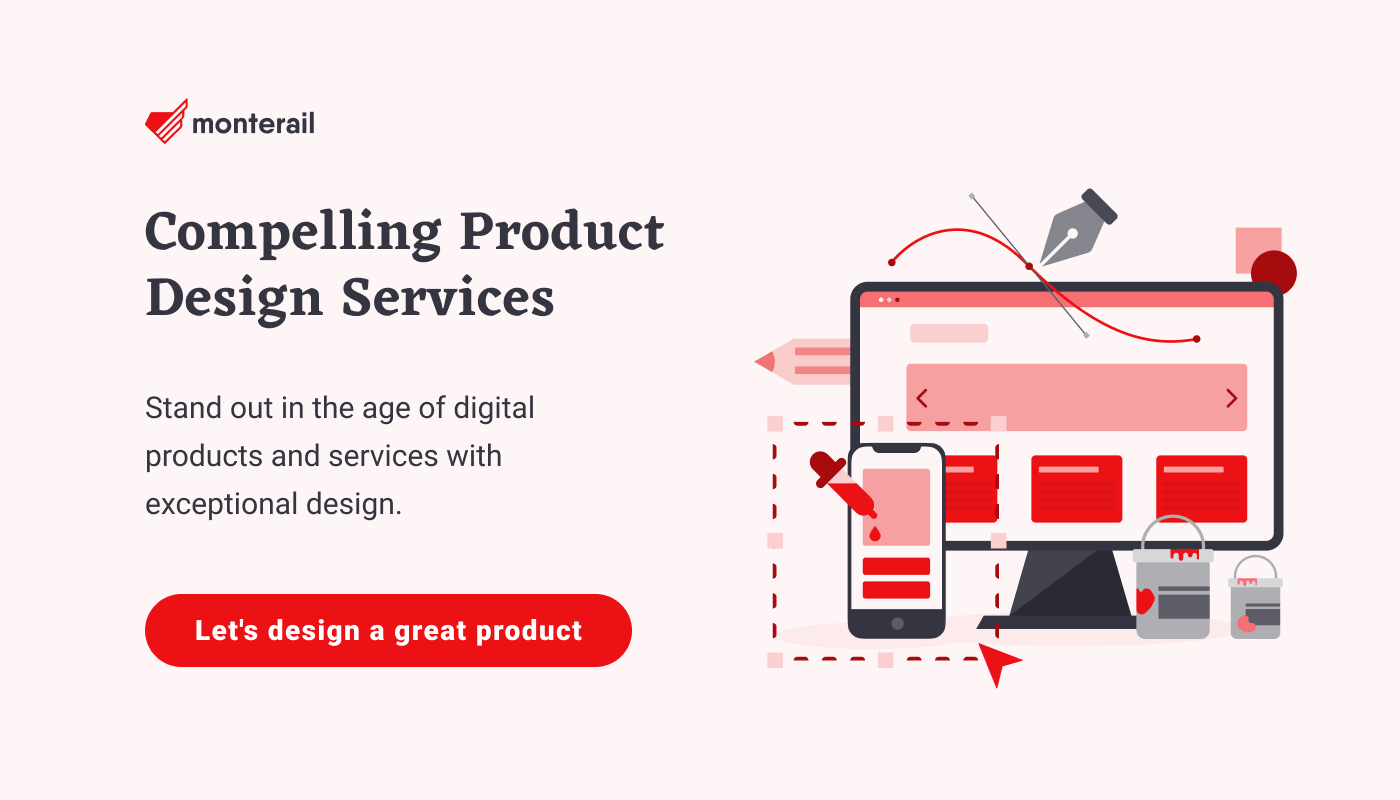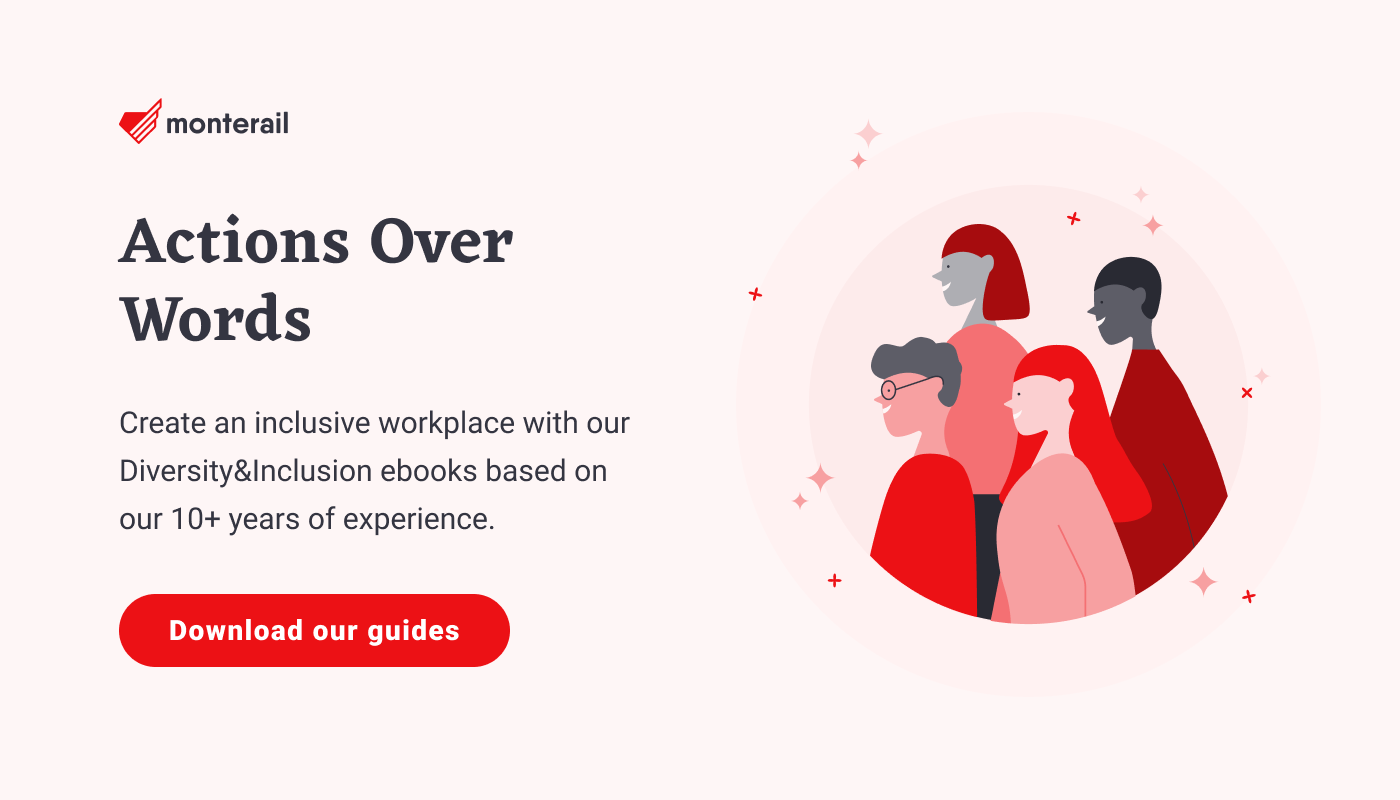The State of Vue.js Report 2025 is now available! Case studies, key trends and community insights.
Table of Contents
Exclusions happen in physical and digital spaces. But how often do we think about it in the digital product space? It is our duty as Product Designers to keep in mind diverse needs and create the most inclusive solution so that it's available to the widest range of people possible.

What is an Inclusive Design?
An inclusive product design allows a diverse audience to access and benefit from a product or service. An inclusively designed product will keep in mind the specific needs a minority group has, so they can also participate in the user experience.
This design methodology allows everyone to experience and feel a sense of belonging. Designing with diversity and inclusivity in mind matters. Every decision we make can raise or lower barriers of participation, and the product reach.

When Does Exclusion in Design Take Place?
Exclusion takes place when we transfer our bias, prejudice, or ignorance into a service or product.
For example, Airbags were usually tested on male dummies. They tend to be bigger and heavier. These tests create and influence car airbag designs for men. Only from 2011, were airbags also tested on female dummies, taking into account a different audience’s body features.
A product that is not inclusive is one that doesn’t solve the problem of a wide audience. Besides having a diverse team, we need to include the team members in the design process to make a difference. Design based on varied approaches will allow everyone to contribute and feel a sense of belonging.

How to Make a More Inclusive Design?
Step 1: Recognize Exclusion
Exclusion happens when we solve problems using our own biases. A cognitive bias is a predetermined and strong notion of someone or something. It’s based on information we know, perceive to know, or lack. A cognitive bias produces errors in the subjective way of thinking. When we recognize when and where we make those mistakes, we can correct them. To reduce it, read about the biases out there, pinpoint the ones you tend to have yourself, catch yourself in the moment, and try a blind approach to the topic to fight that automatic response.
Step 2: Learn from Diversity
When experiences don’t serve people the way they should, people adapt. Insights come when we understand those adaptations, and from what’s shared across everyone’s experiences.
Step 3: Solve One, Extend to Many
Inclusive design works across a spectrum of related abilities, connecting different people in similar circumstances. For example, a solution that works well for someone who’s blind might also benefit a person driving a car.
Example of a cool, inclusive initiative:
Virtual Warsaw: the city is deploying a network of hundreds of thousands of beacon sensors, equipped with next-generation Bluetooth. This aims to help visually impaired residents to move independently around the city, with assistance from their smartphones.


Books about Inclusion in Design That We Recommend
If this is a topic that interests you, we highly recommend you check out these books:

Inclusive Design Patterns - Coding Accessibility Into Web Design
by Heydon Pickering.
“By choosing a typeface that we feel the average user could read we’d be consciously alienating a section of our users. Instead, by selecting a typeface which is workable for those who struggle to read, we arrive at a choice that works for everyone. This is efficient and effective inclusive design.” - Heydon Pickering

Hello World: How to be Human in the Age of the Machine
by Hannah Fry
“Because the future doesn’t just happen. We create it.”
- Hannah Fry

Invisible Women: Exposing Data Bias in a World Designed for Men
by Caroline Criado Perez
“It's not always easy to convince someone a need exists, if they don't have that need themselves.” - Caroline Criado Perez

What is an Inclusive Design?
An inclusive product design allows a diverse audience to access and benefit from a product or service. An inclusively designed product will keep in mind the specific needs a minority group has, so they can also participate in the user experience.
This design methodology allows everyone to experience and feel a sense of belonging. Designing with diversity and inclusivity in mind matters. Every decision we make can raise or lower barriers of participation, and the product reach.

When Does Exclusion in Design Take Place?
Exclusion takes place when we transfer our bias, prejudice, or ignorance into a service or product.
For example, Airbags were usually tested on male dummies. They tend to be bigger and heavier. These tests create and influence car airbag designs for men. Only from 2011, were airbags also tested on female dummies, taking into account a different audience’s body features.
A product that is not inclusive is one that doesn’t solve the problem of a wide audience. Besides having a diverse team, we need to include the team members in the design process to make a difference. Design based on varied approaches will allow everyone to contribute and feel a sense of belonging.

How to Make a More Inclusive Design?
Step 1: Recognize Exclusion
Exclusion happens when we solve problems using our own biases. A cognitive bias is a predetermined and strong notion of someone or something. It’s based on information we know, perceive to know, or lack. A cognitive bias produces errors in the subjective way of thinking. When we recognize when and where we make those mistakes, we can correct them. To reduce it, read about the biases out there, pinpoint the ones you tend to have yourself, catch yourself in the moment, and try a blind approach to the topic to fight that automatic response.
Step 2: Learn from Diversity
When experiences don’t serve people the way they should, people adapt. Insights come when we understand those adaptations, and from what’s shared across everyone’s experiences.
Step 3: Solve One, Extend to Many
Inclusive design works across a spectrum of related abilities, connecting different people in similar circumstances. For example, a solution that works well for someone who’s blind might also benefit a person driving a car.
Example of a cool, inclusive initiative:
Virtual Warsaw: the city is deploying a network of hundreds of thousands of beacon sensors, equipped with next-generation Bluetooth. This aims to help visually impaired residents to move independently around the city, with assistance from their smartphones.


Books about Inclusion in Design That We Recommend
If this is a topic that interests you, we highly recommend you check out these books:

Inclusive Design Patterns - Coding Accessibility Into Web Design
by Heydon Pickering.
“By choosing a typeface that we feel the average user could read we’d be consciously alienating a section of our users. Instead, by selecting a typeface which is workable for those who struggle to read, we arrive at a choice that works for everyone. This is efficient and effective inclusive design.” - Heydon Pickering

Hello World: How to be Human in the Age of the Machine
by Hannah Fry
“Because the future doesn’t just happen. We create it.”
- Hannah Fry

Invisible Women: Exposing Data Bias in a World Designed for Men
by Caroline Criado Perez
“It's not always easy to convince someone a need exists, if they don't have that need themselves.” - Caroline Criado Perez

:quality(90))
:quality(90))